

Table of contents
- Garden in autumn: This work is pending
- lawn in autumn
- Trim shrubs, trees and hedges
- bring harvest
- Winter protection for plants
- Autumn time as planting time
- Pond care in autumn
- Frequently Asked Questions
- Interesting facts about gardening in autumn
In order for the garden to come into full bloom in spring, it needs professional care in autumn. Lawns, hedges, ponds and flowering plants need a lot of attention in different ways at this time of year. The following checklist shows exactly what a gardener has to do in the autumn months.
Garden in autumn: This work is pending
Fall months are high season for gardening as each area needs to be prepared for hibernation. Wrapping up sensitive plants warm, raking leaves, cutting back branches and withered flowers, planting tubers and bringing in the harvest - these are the jobs that need to be done. Potted plants that need reliable protection against the cold deserve special attention. It is also essential to think about the safe hibernation of pond inhabitants.
lawn in autumn
- Mow once or twice
- Thoroughly remove foliage
- collect fallen fruit
Plant growth slows down in autumn, only to come to a standstill in winter. The grass also grows more slowly, the lawn has to be mowed less often and no longer after November. The optimum cutting height is approx. 4 cm. Leaves should be removed from the lawn to allow the grass to sprout in spring. The fallen fruit should also be collected, because it just doesn't look nice. The lawn can be scarified again in September.
Trim shrubs, trees and hedges
- Cut back branches
- cut down trees
- cut hedges
Many shrubs have grown vigorously in summer, but the growth also weakens the plants. In order for the shrubs to get through the winter well, they must be pruned back. Cut back how short is a matter of taste. Most shrubs tolerate a radical cut, so that z. B. Hazelnut tree or lilac should be cut back as far as possible without hesitation. If planned, trees are also to be felled in autumn. Between 01.03. and the 30.09. Incidentally, no trees (with a few exceptions) may be felled. Late autumn is a good time for this work, mainly because the plants' metabolism is now slower and they hardly carry any water.
Hedges should also be trimmed in autumn and spring. Box trees may be severely pruned. A certain degree of caution is required with conifers, because not all varieties tolerate thorough pruning: while the yew does not If you have problems with this, a cut in the old wood of thuja or cypress (also called false cypress) can lead to the formation of unsightly bare spots to lead.
Tip:
Didn't have time to trim the hedge in the fall? Hedges made from deciduous trees and shrubs may also be trimmed in winter.
bring harvest
- Harvest pears and apples early
- Think of the last tomatoes and pumpkins
- Harvest late potatoes in October
Autumn is harvest time, all the fruit in the garden should be harvested during this time and then stored or dried in a dry and cool place. are processed. Even if some tomatoes are still green, they can still be harvested - they will ripen at room temperature. The last pears and apples are also ready to be harvested, some fruits are welcome to remain hanging on the trees. On the one hand, these look decorative, on the other hand, they serve as a source of food for birds. Potatoes (late varieties) can also be pulled out of the ground in October at the latest. After the potato plant has withered, the time has come to harvest the tubers.
Tip:
Most fruits and vegetables can be harvested before the first frost. Red and white cabbage can tolerate a little frost and can be harvested later.
Winter protection for plants
- Use foliage as a protective layer
- Wrap delicate plants with fleece and fabric
- Bring potted plants into the house or pack them well
In autumn, all plants must be prepared for the cold winter as best as possible. Withered leaves piled around the roots offer good protection.
Tip:
Wet foliage is not easily blown away by the wind, so water the foliage layer a little to strengthen it.
Sensitive plants and young fruit trees appreciate additional protection. In the case of standard roses, the grafting point in particular should be protected with a layer of fleece. Camellias or azaleas, as well as other plants that are only partially hardy, must also be wrapped up warm. In addition to the fleece already mentioned, jute fabric, coconut mats and special plastic material from the garden market are also suitable as “packaging material”.
Tip:
Plants must never be wrapped in a plastic film (cling film or tarpaulin), all winter protection materials should be permeable to air.
Potted plants that have been allowed to enjoy the warmth and rain outdoors on the patio or in the garden in summer must be brought indoors. The optimal location for these plants is a conservatory, whether heated or not. At room temperatures and relatively little light, most plants will not rest and continue to grow, which weakens them.
Tip:
If potted plants (eg. B. robust conifers) overwinter outside, they must be packed thoroughly. The soil in the pot (bucket) must not freeze under any circumstances!
Autumn time as planting time
- Transplant shrubs and trees
- Plant container roses
- Plant bulbs of spring flowering bulbs
In the fall, most plants go dormant, so now is the best time to transplant them. Almost all shrubs and trees can be transplanted before the first frost, provided that they are sufficiently moistened. Extended periods of drought - not uncommon in autumn - can cause serious damage to a young plant. A plant with soil or pot balls is less sensitive than a bare-rooted plant and therefore tolerates the change of location better. Container roses can also be planted in late autumn, preferably before the first frost. September-October is a good time to plant bulbs of tulips, hyacinths, daffodils and other spring bloomers.
Tip:
Pay close attention to the planting depth, otherwise the young shoots will have trouble making their way into the light in spring. Mark the places where the tubers will be planted, because the tubers will remain invisible until March-April.
Pond care in autumn
- Protect against the foliage
- Think of winter quarters for pond dwellers

If deciduous trees grow near the pond, the small body of water should be protected from falling leaves with a net. The reason – Too much rotting leaves on the bottom damage the aquatic plants and pond inhabitants. If the garden pond is not deep enough and there is a risk of "freezing through" in winter, a winter quarters for koi or goldfish in a fish farm should be considered.
Frequently Asked Questions
No, garden professionals recommend leaving the dry grass over the winter.
Yes, but the dosage should be reduced, fertilization can be stopped from November.
Interesting facts about gardening in autumn
- Plant conifers: small conifers (conifers) can remain in the same pot for many years. They are planted in structure-rich soil with a high proportion of coarse bark mulch. Water only moderately during the winter months and avoid waterlogging.
- Planning for spring:grape hyacinths, crocuses and tulips are now placed in boxes and pots. From November with brushwood or a layer of peat for a light one winter protection care for.
- Repot climbers: need every 3 to 4 years climbing plants, which are grown in tubs, new earth. For clematis and wisteria, this is the best time to repot.
- Harvest seeds: the annual climbing plants run out of breath in autumn. But before you throw them away, you harvest them Nasturtium, runner beans and morning glory seeds for next year's cultivation.
- Grant fuchsias: In the case of fuchsias, before putting them away, pinch off all withered leaves and flowers and cut back shoots that are too long.
- geraniums grant: By the end of October at the latest, the balcony classics should come into the bright, 5 °C cool winter quarters. Break out all the flowers beforehand and shorten the shoots by half.
- angel trumpet support: for thick branches it is advisable to use a saw. However, do not completely cut back the flowering area, which can be recognized by the asymmetrical leaves.
- Cut clematis: Varieties that have flowered in summer are cut back to 20 cm. Do not prune spring bloomers.
- Curb fungal diseases: collect all diseased and shed leaves and flowers. In doing so, they remove the breeding ground for most types of fungi and prevent the pathogens from overwintering on the balcony.
- Check storm security: weigh down weak planters with large pebbles. Tighten the screws on the box suspension and hanging baskets.
- Winterize: Ornamental trees in the pot are covered with fir branches or wrapped sparingly. This not only protects them from drying out when the winter sun shines on the bark and leaves.
 garden editorial
garden editorial I write about everything that interests me in my garden.
Learn more about fall gardening
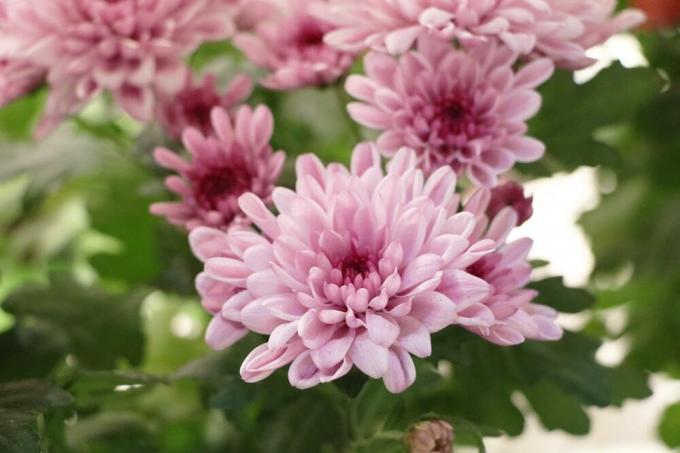
Autumn decoration & winter decoration for balcony and terrace
When the summer flowers on the balcony and terrace have faded, the dreary picture calls for autumn/winter planting and decoration. For working people with little time and desire to care for plants, there is an easy-care one Basic planting that goes with fall and winter (and spring/summer) decorations over and over again quickly works differently.

Plant and decorate the balcony and terrace in autumn
When the balcony/terrace looks barren and empty, autumn is a good time to finally plant and decorate it. When the summer flowers have faded, the dreary picture also calls for autumn planting. We show how you can create a beautiful fall balcony and patio full of fall blooms in a manageable amount of time, starting with the classic fall beauties.
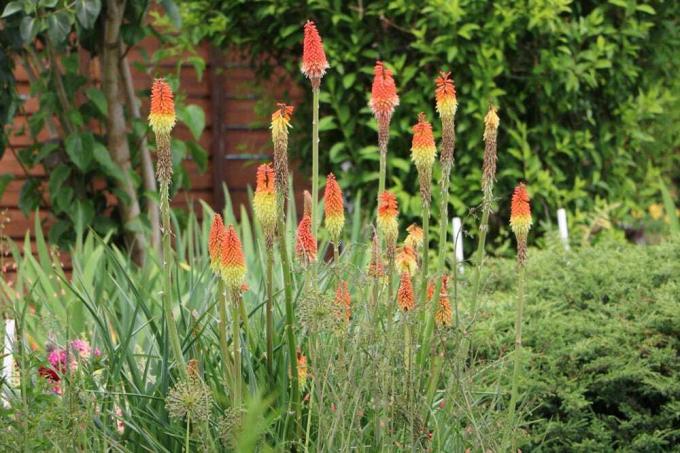
Autumn flowers for the balcony and terrace - the most beautiful perennials
Perennials are best planted in autumn, perennials are perennials or perennial, perennials are extremely easy to care for, many perennials show their flowers until late autumn, perennials often bloom extraordinarily beautiful and/or distinctive - in an application for "best autumn flower" an autumn perennial would definitely win make. In the article you will be introduced to the not endlessly available autumn flowers, beautiful and distinctive perennials.
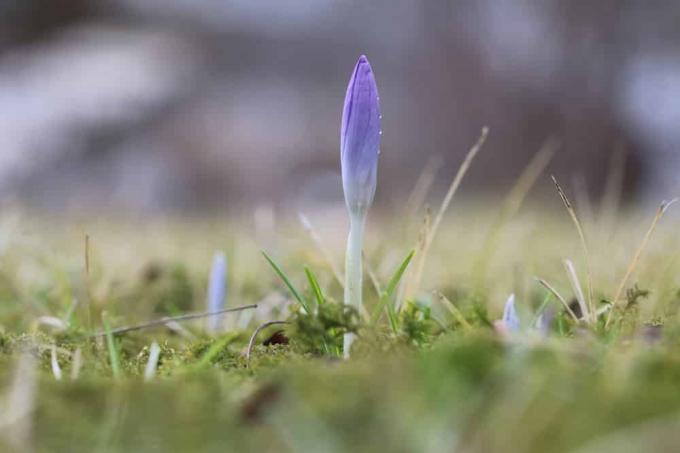
Autumn planting time: these plants must be planted in autumn
Autumn is a good planting time for many plants, and it is the best planting time for all plants that start developing very early in the spring. These plants will be presented to you in the article.
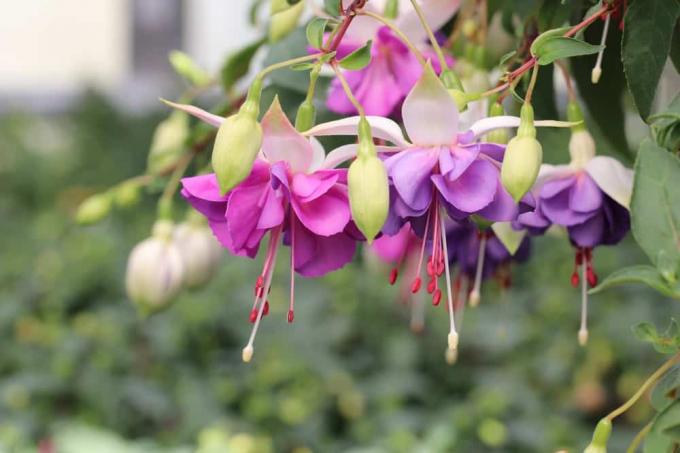
Flowering autumn perennials - these bloom into winter
Among the perennials are the plants with the most beautiful flowers, and many of the perennials show these flowers in the fall or well into the fall. Some autumn perennials Cultivated varieties of autumn perennials bloom even longer, in winter and beyond, you will learn about them in the article.
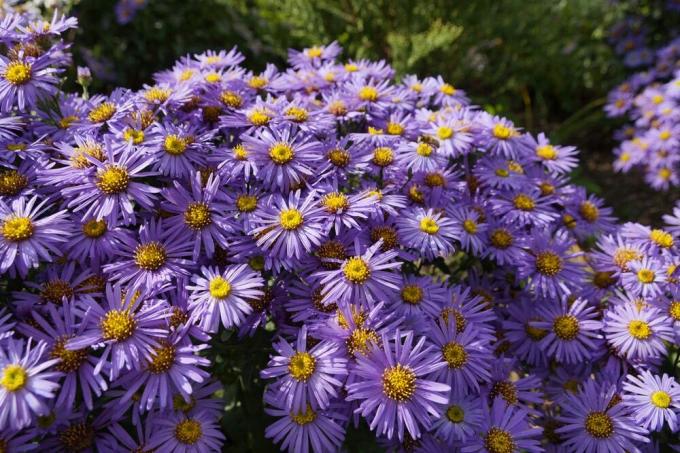
Decorate flower boxes for fall and winter
Decorate flower boxes for autumn and winter? Which decoration is possible depends a bit on whether the flower boxes, which are empty after the summer flowers have been disposed of, should be decorated quickly until they come back in spring planted, whether they should be planted with autumn flowers until next spring, or whether you are designing and decorating a longer-lasting autumn and winter planting would like. In the article you will receive suggestions for the quick and for the more complex variants.


